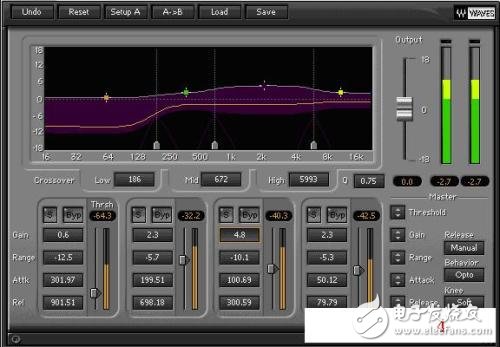Audio Compression Technology: An Overview
 Audio compression technology is a method used to reduce the size of digital audio files without significantly affecting their quality. It involves applying advanced digital signal processing techniques to original PCM (Pulse Code Modulation) audio streams, aiming to decrease the data rate while preserving essential information. This process is known as compression coding, and it must be reversible through a corresponding decoding or decompression step. However, during this process, some noise or distortion may be introduced, depending on the compression technique used.
In the field of audio compression, there are two main approaches: lossy and lossless compression. Lossy compression methods, such as MP3, WMA, and OGG, reduce file size by removing certain audio details that are less perceptible to the human ear. This results in smaller file sizes but with a slight reduction in sound quality. On the other hand, lossless compression retains all original data, allowing for perfect reconstruction of the audio after decompression. Formats like APE, FLAC, and ALAC are examples of lossless compression, which are widely used for high-fidelity audio storage and playback.
Audio compression technology is a method used to reduce the size of digital audio files without significantly affecting their quality. It involves applying advanced digital signal processing techniques to original PCM (Pulse Code Modulation) audio streams, aiming to decrease the data rate while preserving essential information. This process is known as compression coding, and it must be reversible through a corresponding decoding or decompression step. However, during this process, some noise or distortion may be introduced, depending on the compression technique used.
In the field of audio compression, there are two main approaches: lossy and lossless compression. Lossy compression methods, such as MP3, WMA, and OGG, reduce file size by removing certain audio details that are less perceptible to the human ear. This results in smaller file sizes but with a slight reduction in sound quality. On the other hand, lossless compression retains all original data, allowing for perfect reconstruction of the audio after decompression. Formats like APE, FLAC, and ALAC are examples of lossless compression, which are widely used for high-fidelity audio storage and playback.
 **Key Features of Digital Audio**
The quality of digital audio depends largely on two factors: sampling frequency and quantization bit depth. A higher sampling frequency means more samples per second, capturing more detail in the time domain. Similarly, a higher bit depth allows for finer amplitude resolution, resulting in better dynamic range. However, these improvements come at the cost of increased data volume, placing greater demands on storage and transmission capabilities.
For example, a standard stereo audio stream with a sampling frequency of 44.1 kHz, 16-bit quantization, and two channels has a data rate of approximately 1.4 Mbps, translating to around 176.4 KB per second. This is equivalent to storing over 88,000 Chinese characters per second, highlighting the significant data requirements of uncompressed audio.
To address these challenges, audio compression aims to minimize data usage while maintaining acceptable sound quality. The core idea is to remove or reduce redundant information that does not significantly affect the listener's perception.
**Types of Redundancy in Audio Signals**
Redundancy refers to parts of the audio signal that can be removed or compressed without noticeable impact on the listening experience. These redundancies fall into three main categories:
1. **Time Domain Redundancy**
- Non-uniform amplitude distribution: Some parts of the audio have low amplitude, where many bits are unused.
- Sample correlation: Adjacent samples in a continuous audio signal are often very similar, making them predictable.
- Periodic correlation: Certain frequency components repeat over time, creating patterns that can be exploited for compression.
- Long-term self-correlation: Over longer intervals, audio signals maintain stable relationships between samples.
- Silence: Pauses in the audio can be identified and omitted to save space.
2. **Frequency Domain Redundancy**
- Non-uniform power spectral density: Lower frequencies tend to carry more energy than higher ones, leading to uneven distribution across the spectrum.
- Speech-specific characteristics: In voice signals, certain frequencies dominate, forming formants that define speech patterns.
3. **Auditory Redundancy**
Based on psychoacoustic models, auditory redundancy takes advantage of the limitations of human hearing. For instance, sounds that are masked by louder tones or occur outside the audible range can be safely reduced or removed without affecting perceived quality. This principle is crucial in lossy compression algorithms, enabling efficient data reduction while preserving the listening experience.
By leveraging these redundancies, audio compression technologies make it possible to store and transmit high-quality audio efficiently, meeting the growing demands of modern media consumption.
**Key Features of Digital Audio**
The quality of digital audio depends largely on two factors: sampling frequency and quantization bit depth. A higher sampling frequency means more samples per second, capturing more detail in the time domain. Similarly, a higher bit depth allows for finer amplitude resolution, resulting in better dynamic range. However, these improvements come at the cost of increased data volume, placing greater demands on storage and transmission capabilities.
For example, a standard stereo audio stream with a sampling frequency of 44.1 kHz, 16-bit quantization, and two channels has a data rate of approximately 1.4 Mbps, translating to around 176.4 KB per second. This is equivalent to storing over 88,000 Chinese characters per second, highlighting the significant data requirements of uncompressed audio.
To address these challenges, audio compression aims to minimize data usage while maintaining acceptable sound quality. The core idea is to remove or reduce redundant information that does not significantly affect the listener's perception.
**Types of Redundancy in Audio Signals**
Redundancy refers to parts of the audio signal that can be removed or compressed without noticeable impact on the listening experience. These redundancies fall into three main categories:
1. **Time Domain Redundancy**
- Non-uniform amplitude distribution: Some parts of the audio have low amplitude, where many bits are unused.
- Sample correlation: Adjacent samples in a continuous audio signal are often very similar, making them predictable.
- Periodic correlation: Certain frequency components repeat over time, creating patterns that can be exploited for compression.
- Long-term self-correlation: Over longer intervals, audio signals maintain stable relationships between samples.
- Silence: Pauses in the audio can be identified and omitted to save space.
2. **Frequency Domain Redundancy**
- Non-uniform power spectral density: Lower frequencies tend to carry more energy than higher ones, leading to uneven distribution across the spectrum.
- Speech-specific characteristics: In voice signals, certain frequencies dominate, forming formants that define speech patterns.
3. **Auditory Redundancy**
Based on psychoacoustic models, auditory redundancy takes advantage of the limitations of human hearing. For instance, sounds that are masked by louder tones or occur outside the audible range can be safely reduced or removed without affecting perceived quality. This principle is crucial in lossy compression algorithms, enabling efficient data reduction while preserving the listening experience.
By leveraging these redundancies, audio compression technologies make it possible to store and transmit high-quality audio efficiently, meeting the growing demands of modern media consumption.


Mall solar carport system,Mall solar carport system cost,Mall solar carport system design
Hebei Jinbiao Construction Materials Tech Corp., Ltd. , https://www.pvcarportsystem.com